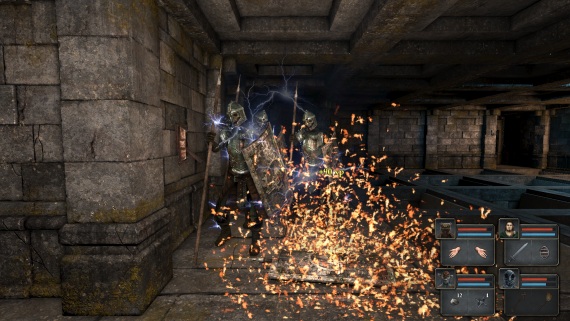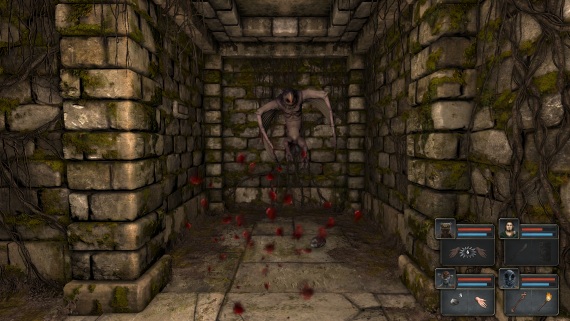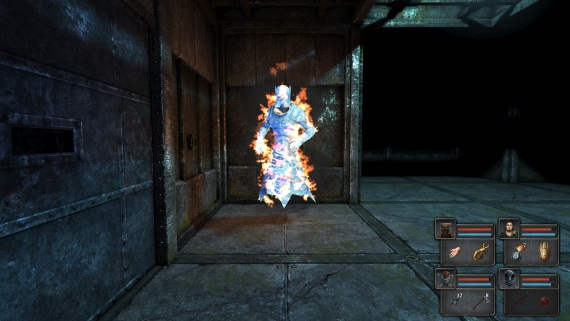28 Feb
Not only does this game have skeletons, it has skeletons squads who march in formation and like your own party.
Legend of Grimrock is an old-school dungeon-delving RPG. Think Ultima Underworld, Eye of the Beholder and even Stonekeep. You control a group of four adventurers, that true to the conventions of this particular sub-genre, always move together in a tight group and can only ever face the same direction. Your job is simply to survive all levels of the dungeon which naturally is filled with all manner of monsters, traps and locked doors.
- This game is serious about being old-school. There’s only a very minimal tutorial about how the game works and almost no explanation for the magic and alchemy system at all. Magic works by stringing runes together and you can either discover spells by experimenting with combinations of runes or find spell scrolls which tell you the right combination. The same goes with alchemy. There’s even a mode that disables auto-mapping so you’ll have to draw maps on your own by hand. But that’s way too hardcore for me.
- The graphics are easy on the eyes with decent animation for the monsters. And I like how different levels of the dungeon actually look different or it would be terribly boring. Unfortunately you probably won’t get to really look at the monsters much unless you don’t care about dying. The game uses really old-fashioned controls, requiring you to actually click on your characters’ portraits when they are ready to attack. This means that in fights your eyes are constantly on your characters’ portraits because you want to attack as soon as a character is ready to attack. It’s a needlessly frustrating user interface design. If you think that’s bad, imagine how tedious it is to make multiple clicks to cast a spell in combat.
Secret doors often open to reveal more monsters behind them, leading us to once again wonder what they eat when stupid adventurers aren’t handy.
- Puzzles and secret doors are arguably more important in this game than combat. You’re more likely to get stuck in the game due to a puzzle or inability to find the right secret door than because you can’t beat a monster, especially since it is easy to use cheesy tactics in fights. Unfortunately the puzzles here just aren’t very interesting, involving for the most part memorization, sharp eyes and even reflexes. There are plenty of posts on the official forums complaining about the narrow time window in which you need to perform a fixed sequence of actions to beat puzzles.
- Like any RPG, there is a character development system. This one involves putting points into skills each time you level. As usual in this genre, it really pays to specialize so spreading your points around different skills is usually a bad idea. There’s enough variety in here to keep things interesting and there are only three classes but it’s no Diablo or anything.
- The game makes some unintuitive choices about game mechanics in this game, which can throw you off for a bit. For example dexterity is needed to hit in melee combat but not for ranged weapons, while strength boosts damage for both melee and ranged attacks. This has the odd effect of making the strong minotaur the perfect character to put in the back ranks of your party to throw rocks at enemies. You just have to roll with these design choices.
Mages deal a ton of damage in this game, and freezing enemies in place is always a handy side effect to have.
Overall there’s a certain retro charm about this game and playing it while actively referring to an online guide made the frustrating puzzle and secret door finding parts tolerable. But I think it also serves to remind us why we moved on to other RPG designs since then.
Written on February 28 2013 and is filed under PC Games.
You can follow any responses to this entry through the RSS 2.0 feed.
You can leave a response, or trackback from your own site.



Leave a Reply